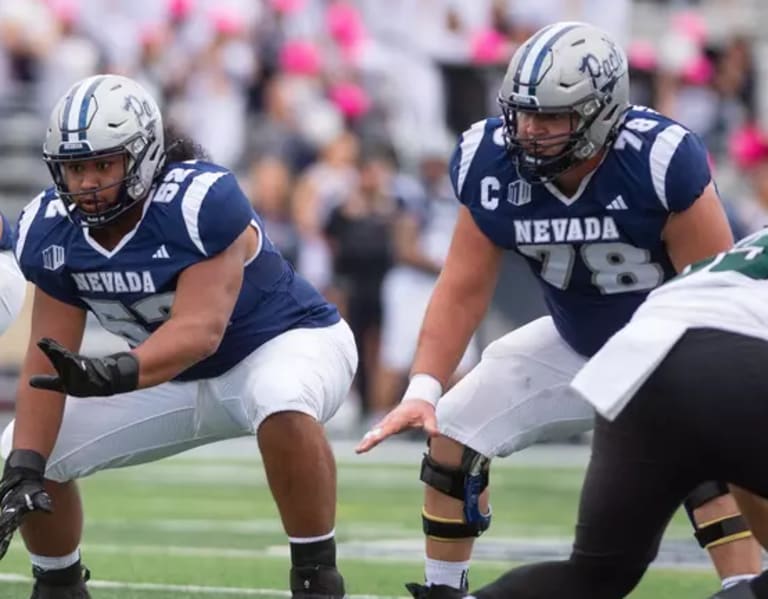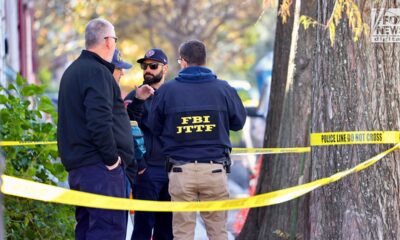Nevada
5 things that could come out of the DNC

Democrats from across the country will meet in Chicago this week to rally around Vice President Kamala Harris and Minnesota Gov. Tim Walz — just a few weeks after the Democratic Party’s ticket turned upside down following President Joe Biden’s exit from the race.
The Silver State’s delegates will travel to Chicago for the four-day convention, where they are expected to formally nominate the Harris-Walz ticket for the November election.
A lot of the schedule remains unfinalized, according to convention officials, who couldn’t confirm any specific speakers as of Friday. Current and past presidents are expected to participate in the programming, according to convention officials.
“Convention is our opportunity to tell our story directly to the American people, further introduce our Democratic nominees, and grow the broad and diverse Harris-Walz coalition to defeat Donald Trump” said Emily Soong, a convention spokesperson, in a statement. “We look forward to sharing more information about our full convention program with the public.”
Here’s what we can expect to come out of the convention.
1. A greater awareness of Nevada’s importance in the election
Nevada — a critical battleground state whose six electoral votes could be the determining factor in determining the next presidency — will be of importance at the convention.
Nevada was the first battleground state Harris visited in 2024 and was the first early primary battleground state to unanimously pledge its delegates to Harris once Biden exited the race, according to the state Democratic party.
At the Nevada’s First in the West State Convention in May, DNC Chair Jaime Harrison said Nevada is setting the stage for what it means to organize and deliver results.
“This state is going to be key in making sure we secure a victory in November,” Harrison said, according to a statement from the Nevada State Democratic Party.
Every morning of the convention, Nevada’s Democratic delegates will hold a breakfast that will feature well-known Democratic leaders who will speak to the state’s delegates, according to Nevada State Democratic Party Chairwoman Daniele Monroe-Moreno. Those speakers include Maryland Gov. Wes Moore, Sen. Cory Booker of New Jersey, Rep. Ro Khanna of California and Illinois Gov. J.B. Pritzker.
“Seems like everyone and their mama wants to come and talk to the Nevada delegation,” Monroe-Moreno said.
Nevada is incredibly important, said Democratic Rep. Susie Lee on Wednesday. She pointed to polling from the Cook Political Report that shows Nevada is the one swing state where Trump is still ahead.
“We got a lot of work to do,” Lee said. “We certainly know that we win elections when we motivate and organize and turn people out, and that’s exactly what we’re going to do.”
2. High energy
Since Biden dropped from the race and Harris launched her campaign around three weeks ago, Nevada Democrats have seen renewed energy — with thousands turning out to Harris and Walz’s Las Vegas rally last week — and the convention will be no different.
Conventiongoers are expected to be fired up, Monroe-Moreno said.
“It’s not just Democrats, and I think that’s what’s really exciting to me,” Monroe-Moreno said. “It’s people that were looking for something different, looking for hope, looking for a different vision. And they see that in the Harris-Walz ticket.”
Democrats will seek to use the convention to build on the momentum Harris’ campaign is experiencing and work to turn that momentum into votes in November.
3. Highlight of diversity
Like Nevada’s congressional delegation and its legislative makeup, the Democratic national delegation will be represented by a female majority, according to Democratic Assemblywoman Sandra Jauregui, who spoke at a delegate send-off event Thursday.
“This female majority is excited,” she said.
Monroe-Moreno, who was the first Black woman to be elected to serve as chair of the state Democratic party, said she will be joined by other Black women who also became the first chairs of their state parties. There will be a Black Political Excellence Event to honor those women on Thursday afternoon, Monroe-Moreno said.
“When you look at who we are, Nevada’s delegation is like a microcosm of who we are as America,” Monroe-Moreno said. “We are one of the most diverse delegations because we are one of the most diverse states in the nation. It’s representative of who we are, and every voice matters and is, we’re active in this community, but nationwide.”
4. A clearer party platform
Harris and Walz are expected to highlight the party’s policies and platform and compare it with the policies of the Trump-Vance ticket, according to Monroe-Moreno.
The chairwoman said Democrats will talk about issues that matter to people, such as clean energy and the climate.
“Nevada is home to the two fastest-rising heat places in America — Las Vegas and Reno — so families were talking about it,” Monroe-Moreno said on Thursday. “So we have folks coming in to talk about what we can do better to bring that down ourselves, you know. But what is that legislation that we need, both at the state level and at the federal level?”
Ahead of the convention in July, the DNC released its draft of the 2024 platform that includes plans to continue the Biden-Harris’ administration’s work, from continuing to lower drug prices and working to seize fentanyl at the border.
4. Future leaders
of the Democratic Party
While the convention organizers couldn’t specify any speakers, past conventions have seen rising stars in the party appear on stage.
Monroe-Moreno said the first time the country saw Barack Obama speak was at a convention, before his presidency.
“The next Barack, the next Kamala, the next Joe Biden might be on the stage that America doesn’t know yet,” she said. “They may be known in their community, in their city and their state, but they’ll be on the larger stage, to see the future of what this party is and the great diversity of who we are as a party.”
Contact Jessica Hill at
jehill@reviewjournal.com.
Follow @jess_hillyeah on X.

Nevada
Dams in quake-prone Nevada are vulnerable. Near Tahoe, the state is shoring one up – Carson Now

By Amy Alonzo — Dwarfed by drought, the warming climate and other, more immediate environmental threats, earthquakes aren’t at the forefront of most Nevadans’ minds.
But through the mid-20th century, Nevada was known as an earthquake state. While the state has experienced few sizable quakes since then, recent temblors have caught the attention of those who monitor earthquakes.
On Dec. 5, waves of water in the cave that houses rare Devil’s Hole pupfish in Death Valley National Park sloshed nearly 2 feet high after a 7.0 magnitude earthquake struck off the coast of California.
Just four days later, a 5.8 magnitude quake struck on an unnamed fault between Yerington and Silver Springs, shaking Northern Nevada and sending objects flying in some buildings.
Neither of the earthquakes resulted in any substantial damage — the California earthquake was too far offshore, while the Nevada quake had its epicenter in a remote area — but they are reminders that seismic activity could result in significant damage to the state’s aging infrastructure. It’s why state officials are proactively shoring up some of Nevada’s oldest earthen dams that, if shaken to the point of breaking, could cause water supply contamination for tens of thousands of people and deadly floods.
Earthquake magnitude is measured on a scale of 1 to 10, with damage starting to be visible around magnitude 5; by magnitude 6, buildings could see structural damage requiring repairs. Nevada experiences about one magnitude 6 earthquake per year, said Christie Rowe, director of the Nevada Seismological Laboratory at the University of Nevada, Reno, but almost always in a remote portion of the state.
If a magnitude 6 or greater earthquake were to occur in Las Vegas, Reno or another densely populated portion of the state, “there’s going to be a lot [of] impact,” Rowe said.
In the case of the recent earthquakes with epicenters in Yerington and off California’s coast, urban areas such as Reno were “pretty lucky,” Rowe said. “If either one had happened in a city, it would have been bad news.”
Inspections around the epicenter of the Lyon County earthquake revealed cracks in irrigation ditches and collapses on the banks of the Walker River but no damage to roads or bridges.
The quake was also a reminder to officials of the state’s seismic history and the need to beef up some of the hundreds of dams across Nevada, most constructed in the days before statewide engineering standards and made of dirt and other natural materials.
Damage from earthquakes is “definitely a concern,” said Keith Conrad, chief of dam safety at Nevada’s Division of Water Resources.
The state recently received federal funds to upgrade the dam at Marlette Lake, one of the oldest dams in the state. Marlette Lake perches on the rim between the Lake Tahoe Basin and Carson City, a popular mountain biking and hiking destination renowned for its fall colors and views down to Lake Tahoe. Its reservoir, restrained by an earthen dam estimated to be more than 150 years old, serves as the water source for multiple Northern Nevada counties and cities.
The state purchased the lake and its surrounding land in 1963, but now its aging infrastructure, combined with its location in an area of high seismic activity, makes it a “high hazard dam.” Annual inspections of the dam indicate a “high probability” of a breach if an earthquake of 6.5 magnitude or greater were to occur. If it breached, it could easily flood State Route 28, which runs between the dam and Lake Tahoe, and, with a sewage pipe running beneath the highway, damage to the highway could release sewage and debris into Lake Tahoe.
The seismic retrofit being done at Marlette should cover a lot of vulnerabilities that could affect the lake, caused by earthquakes or other events, Rowe said.
“If they know that dam is vulnerable, I’m really glad they’re doing preventative work,” she said. “It’s going to be way less expensive than if the dam failed.”
High hazard dams and federal emergency declarations
In 1915, the state experienced its largest earthquake, a 7.3 shaker near Winnemucca.
But there has been little high-magnitude shaking in urban areas since 1960, the exception being a magnitude 6 earthquake in the Wells area in 2008. But earthquake faults are still being discovered across the state (the Yerington-area quake occurred near no known faults) and there is still serious potential for earthquakes, especially in western Nevada.
In Lake Tahoe, there are multiple major fault lines that run beneath the lake, Rowe said, and the area is considered at high risk for earthquakes. While the state has been relatively free of any large quakes during the last few decades, Nevada has had the third most frequent number of large earthquakes in the last 150 years.
Lake Tahoe was created by seismic activity — earthquake faulting caused a portion of the mountains to drop, creating a giant bowl, and volcanic deposits dammed the bowl on its north side.
About 5,000 years ago, Lake Tahoe’s west shore experienced an earthquake large enough to produce a tsunami — and a tsunami-producing fault in the basin is overdue for an earthquake, scientists said more than a decade ago at an annual meeting of the American Geophysical Union.
Earthquakes occur every 3,000 to 4,000 years along the West Tahoe Fault that runs from beneath the lake up to the Echo Summit area. That fault last saw a major quake 4,500 years ago. The Incline Fault, located in the northeast portion of the lake, saw a quake of roughly magnitude 7 about 575 years ago.
During earthquakes, concern first focuses on injury and loss of life, said Rowe. But after that, effects to basic services and communications are of utmost concern, she said.
“The resilience of a community relies on the resilience of the water supply and the food supply,” she said. “It can take days or weeks to restore those kinds of services.”
It’s that focus on infrastructure that prompted the state to apply for a $10 million federal grant to upgrade Marlette Lake Dam to reduce the risk of a dam breach during an earthquake. The Federal Emergency Management Agency (FEMA) agreed the dam, listed as “high hazard,” warrants the work and issued the funding.
Nevada’s Division of Water Resources, the department Conrad staffs, oversees about 660 dams across the state; additional dams, such as those operated by the Bureau of Reclamation, Army Corps of Engineers and Bureau of Indian Affairs, do not fall under the division’s purview.
Few are concrete or rock masonry dams — most are earth embankment dams. Many of them are part of stormwater detention basins in Las Vegas or are small, privately owned structures used for irrigation in rural portions of the state (nearly half of the state’s dams are privately owned) but some are larger and in areas that could have substantial downstream effects if they failed, such as the dam at Marlette Lake.
The dams are categorized into “low,” “significant” and “high” hazard by how catastrophic their failure would be on downstream residents and infrastructure. While failure of low hazard dams are unlikely to have any substantial economic effects or cause death, failure of significant hazard dams are likely to cause substantial economic effects; failure of a high hazard dam is likely to lead to death.
Nearly a quarter of state-monitored dams, primarily in the Reno/Tahoe and Las Vegas areas, are considered “high hazard.” (The designation does not reflect the safety or condition of the dam.)
Nevada didn’t start regulating dams until 1955; “anything prior to that, we don’t know a whole lot about these dams, and chances are they were never engineered,” Conrad said. When it comes to Marlette Lake’s dam, built nearly a century before the state started regulating dams, “Who knows what techniques they used to build it. There’s a big old question mark on that portion of the dam.”
But the general state of dams within Nevada is pretty poor, Conrad said.
A 2018 report from the American Society of Civil Engineers ranked Nevada’s dams with a lowly grade of “D+” or “Poor: At Risk.”
A separate report issued by the National Inventory of Dams in 2023 echoed the 2018 findings, with the condition of the bulk of the dams included in the report listed as “fair” or “poor.”
“It’s hard to say exactly what the likelihood of failure is,” Conrad said.
In 2003, the state began drafting emergency action plans for all high and significant hazard-rated dams in the state.
“We are kind of ahead of the curve” compared with some other states, Conrad said.
Those plans have been activated occasionally, Conrad said, such as earlier this year at Angel Lake near Wells when cracks were found in the roughly 150-year-old dam. The seeping cracks created sinkholes on top of the dam, complicating repairs.
There has never been a federal emergency declaration in Nevada because of a dam failure in the state, but Nevada has seen multiple dam failures throughout the years.
The earliest documented dam failure in Nevada occurred in 1876, when an irrigation dam across the Humboldt River 22 miles east of Battle Mountain failed, releasing a large volume of water through the canyon and flooding several downstream ranches.
In 1955, an intense December storm dropped between 10 inches and 13 inches of rain in Northern Nevada, causing flooding along the Walker, Carson and Truckee rivers. Derby Dam on the Truckee River failed, and Hobart Dam outside Carson City failed and released water that severely damaged U.S. Route 395. Nearly $4 million in damages (roughly $44.2 million in 2022 dollars) was incurred and one person died.
Hobart Reservoir, also part of the Marlette Lake Water System, is next on the state’s list of dams to be repaired with federal funds, Conrad said.
— This story is used with permission of The Nevada Independent. Go here for updates to this and other Nevada Independent stories.
Related
Nevada
Air Force Veteran Tells the Story of Hidden Health Risks at Nevada Test Site

Dave Crete was sitting around with some fellow Air Force veterans he worked with almost three decades prior on the Nevada Test and Training Range when they broached the topic of tumors.
It was an unexpected conversation among the eight, but an enlightening one, said Crete, who found out six of his former crewmates had undergone tumor removal procedures. The Las Vegas resident said doctors had found more than 20 lipomas on him, including one that was the size of a grapefruit and surgically removed from his back.
The issues even extended to their families, with wives becoming sick, reporting multiple miscarriages or giving birth to children with defects or illnesses, Crete said.
He discovered the common thread between all these medical complications was exposure to radiation while working at the Nevada Test and Training Range.
Though veterans can usually get benefits to help with costs assumed from injuries related to service, Crete and many of his former crewmates can’t because their jobs were classified, meaning they can’t prove to the government that they were exposed to radiation.
Now, he’s working with federal lawmakers and producing a documentary to raise awareness about this group of impacted veterans.
“Our challenge is this: We’re a group of people that exists that nobody knows about, that nobody knows what we did, and nobody knows about where we worked,” Crete said. “It’s the only way I could figure out to effectively tell people our story and let them see it because there’s no Twin Towers; there’s no plane crash; no ship (got) sunk; there’s nothing to tie our story to, and so we have to create it, and that’s what we’ve been doing, creating a vehicle, if you will, to help us tell our story.”
Crete began the work in 2023 after forming his nonprofit The Invisible Enemy, a Las Vegas-based organization advocating for the thousands of military personnel that worked on the Nevada Test and Training Range and have been affected by exposure to toxic radiation.
The 2.9-million-acre Nevada Test and Training Range — formerly the Nevada Test Site — was established northwest of Las Vegas after World War II as a military testing site for nuclear weapons and now serves as “the largest contiguous air and ground space available for peacetime military operations,” according to Nellis Air Force Base.
Many people commonly refer to part of the range as Area 51, rumored to house top-secret U.S. military equipment and operations.
Crete worked at the Nevada Test and Training Range for four years, ending his service in 1987. He remembers testing being done near the gate where he was stationed. At the time, he and his crew members “didn’t know that’s what you could see,” he said, and were completely unaware of the issues that would follow them due to radiation exposure even when their service ended.
Crete said he would usually work for days at a time — sleeping, eating and drinking water while on the test site — and then go home to his wife, unknowingly bringing his contaminated clothing to be washed.
After discovering at the reunion how many veterans from the Nevada Test and Training Range ended up sick, Crete went digging for answers and found an environmental assessment of the Tonopah Test Range dated December 1975. It was conducted by the Department of Energy and Sandia National Laboratories.
The 89-page document stated that “The impacts of normal operation of the Tonopah Test Range consist of scarring of the land by roads and shrapnel impact, the use of resources and energy, noise, debris, some scattered toxic or radioactive materials, and economic effects on nearby communities.”
Three areas of the test site had been contaminated with plutonium from tests carried on in 1963, but the report stressed that “there is no indication of migration of this surface contamination outside the (site’s) fence, let alone outside the Range; nor is there any indication that this plutonium has entered significantly into local biological systems or food chains.”
“What they decided was that the benefits to national security, the benefits to having a prolific nuclear force, outweighed the future environmental liabilities … the government decided that the juice was worth the squeeze, and none of us knew,” Crete said. “You just never thought that the government would have actually put you somewhere knowing that eventually there was a good chance you were going to end up sick.”
Crete said he had since been in contact with “hundreds and hundreds” of veterans, with more than half reporting some sort of serious health condition among them or their families.
To raise awareness of the plight these veterans have faced, Crete decided he wanted to create a movie. He made an account on film industry website IMDb and began emailing those who were affiliated with projects like the 2023 “Oppenheimer” movie and the 2023 “Downwind” documentary.
He eventually received a response from a camera operator for “Downwind,” who connected him with the documentary’s directors, Mark Shapiro and Douglas Brian Miller. Crete then hired Backlot Docs — the feature documentary production company co-founded by Shapiro and Miller — to create the film.
“The Invisible Enemy” first fundraiser took place in late 2023 and filming began the same year to produce an 11-minute short titled “The Invisible Enemy: Hidden Sacrifice.” It took them three months from conceptualizing to completing the documentary, Crete said, and was uploaded to YouTube this past June.
Crete’s activism hasn’t stopped there.
The Invisible Enemy organization has been working with lawmakers, like U.S. Rep. Mark Amodei, R-Nev., to craft legislation that would help those exposed to radiation at the Nevada Test and Training Range get medical benefits.
On Sept. 16, 2024, Amodei and U.S. Rep Susie Lee, D-Nev., introduced the Presumption for Radiation or Toxin Exposure Coverage for Troops (PROTECT) Act in the U.S. House of Representatives, which would have provided medical care for veterans exposed to radiation and other toxins at the Nevada Test and Training Range by setting a “presumption of exposure” to these toxins starting in 1972.
The bill would have established that anyone who worked at the Nevada Test and Training Range during or after 1972 was presumably exposed to radiation or other toxins. It would cover those not included in Executive Order 13179, which was signed by former President Bill Clinton in 2000 to compensate civilians, their survivors and Department of Energy employees exposed to radiation.
“A quick look at the facts shows that this group of veterans were in serious need of additional support as a result of their service,” Amodei said in a September statement. “As with every veteran, those serving at (the test site) during the determined time frame are entitled to care for illness and injury sustained in the line of service to our nation. I’m glad to lead the charge on this and will continue to push until this change is actualized.”
The House proposal never came to a vote and died with the end of the 118th Congress. It would need to be reintroduced in the new session of Congress.
Crete, who travels to Washington every few months to advocate for the cause, believes they’ll be granted a hearing by Congress this year.
U.S. Rep. Dina Titus, D-Nev., in 2023 introduced the Providing Radiation Exposed Servicemembers Undisputed Medical Eligibility (PRESUME) Act to support veterans exposed to toxic radiation by prohibiting the secretary of Veterans Affairs from requiring evidence of a specific dose of radiation to determine whether someone is a radiation-exposed veteran.
Under the Radiation Exposure Compensation Act (RECA) established in the 1990s, civilians who contracted cancer and other specific diseases from exposure to radiation can receive compensation without having to go through testing required by the Veterans Affairs, said Shane Liermann, deputy national legislative director for the nonprofit organization, Disabled American Veterans.
A veteran must provide proof of on-site participation, radiation dose estimates from the Defense Threat Reduction Agency and a medical opinion supporting that their disease was caused by radiation exposure to receive entitlement for what Veterans Affairs considered “presumptive diseases” caused by radiation exposure.
But Crete claims that he and other veterans working at the Nevada Test and Training Range can’t even prove they were there due to their classified work, which leaves them unable to get any federal support.
Titus, in a statement, said “radiation dose estimates have historically been unreliable, leaving many exposed veterans unable to obtain the compensation they have earned.”
“In the course of their service, like anyone on the battlefield, veterans at the Nevada Test Site put themselves in harm’s way in service to our country. We cannot continue to leave any of them behind. The bureaucratic barriers to care could be easily fixed through my legislation,” Titus in 2023. “Our country’s atomic veterans helped win the peace during the Cold War, and they must be able to access the highest standard of care available.”
Titus’ bill was last referred to the Subcommittee on Disability Assistance and Memorial Affairs on Nov. 8, 2023. It never came to a vote.
Crete’s next moves will be to continue working with Nevada’s congressional delegation to draft and introduce legislation and create a full-length documentary for “The Invisible Enemy.”
He’ll show the short documentary at film festivals in Santa Fe, New Mexico, and New Jersey in the coming months. Meanwhile, filmmakers continue to gather footage for the longer feature.
The Invisible Enemy is also accepting donations on its website and fundraising through film showings in cities like Cleveland and New York. Crete said he would “speak to anybody and everybody that will listen, so I can tell our story, so that we can get the men and women what they need.”
“We all understand there’s risk, but it’s not reasonable to think that you’re going to be stationed out in the desert in Nevada and have a life-threatening illness, simply because that’s where you slept at night. And that’s what we’re trying to recognize and have the government recognize,” Crete said. “We got to participate in the coolest thing going that the military had, and I believe that there is a way to tell the story of this group of people and what they did and what we accomplished without violating our security. But it’s a story I just truly believe needs to be told, the good and the bad.”
___
(c)2025 the Las Vegas Sun (Las Vegas, Nev.)
Visit the Las Vegas Sun (Las Vegas, Nev.) at www.lasvegassun.com
Distributed by Tribune Content Agency, LLC.
Story Continues
© Copyright 2025 Las Vegas Sun. All rights reserved. This material may not be published, broadcast, rewritten or redistributed.
Nevada
Stanford loses commitment from Nevada OL Tyson Ruffins

Back on December 21st, Stanford football lost a commitment from Nevada transfer offensive lineman Tyson Ruffins, who announced on X (Twitter) that he was committing to Cal instead. Ruffins is a talented offensive lineman who is coming off a strong redshirt freshman season for the Wolfpack, making his loss significant for the Cardinal.
Ruffins has since deleted his tweet signaling his commitment to Cal while his commitment tweet to Stanford has stayed up. This has created some confusion of as to what his status is with respect to both Stanford and Cal. While I cannot speak for the Cal side of things, I can confirm that Ruffins has not flipped his commitment back to Stanford.
Stanford has since been looking to find other offensive line prospects who can take the spot that Ruffins was originally going to have. They were able to add one today in Georgia Tech transfer Kai Greer, who once verbally committed to Stanford as part of their 2024 class before flipping to Arkansas and then later flipping to Georgia Tech. Stanford extended an offer to him shortly after he entered the transfer portal at the end of December. I’ll share more thoughts on Greer in a separate article, so stay tuned for that.
CardinalSportsReport.com on Facebook, IG, Threads, X (Twitter), & Blue Sky: @StanfordRivals
Ben Parker on Facebook, IG, Threads, X (Twitter), & Blue Sky: @slamdunk406
Email: slamdunk406@yahoo.com
Join the conversation on CardinalSportsReport.com
-

 Health1 week ago
Health1 week agoNew Year life lessons from country star: 'Never forget where you came from'
-
/cdn.vox-cdn.com/uploads/chorus_asset/file/24982514/Quest_3_dock.jpg)
/cdn.vox-cdn.com/uploads/chorus_asset/file/24982514/Quest_3_dock.jpg) Technology1 week ago
Technology1 week agoMeta’s ‘software update issue’ has been breaking Quest headsets for weeks
-

 Business5 days ago
Business5 days agoThese are the top 7 issues facing the struggling restaurant industry in 2025
-

 Culture5 days ago
Culture5 days agoThe 25 worst losses in college football history, including Baylor’s 2024 entry at Colorado
-

 Sports4 days ago
Sports4 days agoThe top out-of-contract players available as free transfers: Kimmich, De Bruyne, Van Dijk…
-

 Politics3 days ago
Politics3 days agoNew Orleans attacker had 'remote detonator' for explosives in French Quarter, Biden says
-

 Politics3 days ago
Politics3 days agoCarter's judicial picks reshaped the federal bench across the country
-

 Politics1 day ago
Politics1 day agoWho Are the Recipients of the Presidential Medal of Freedom?

















